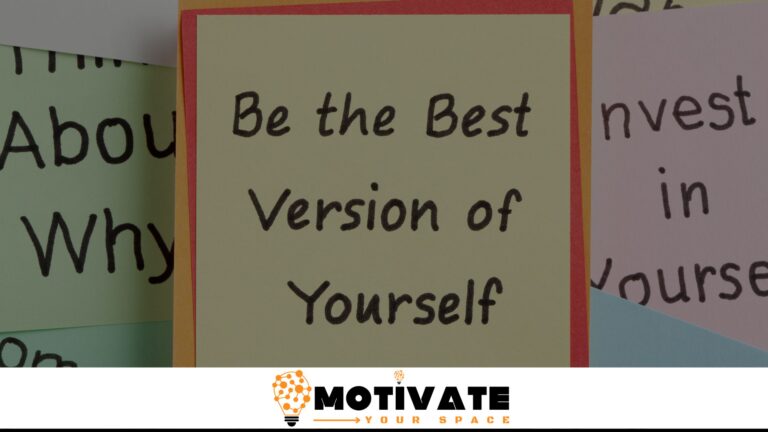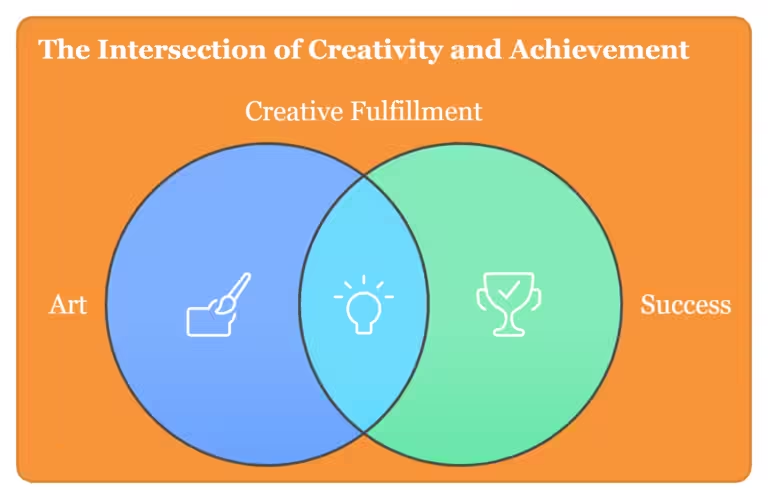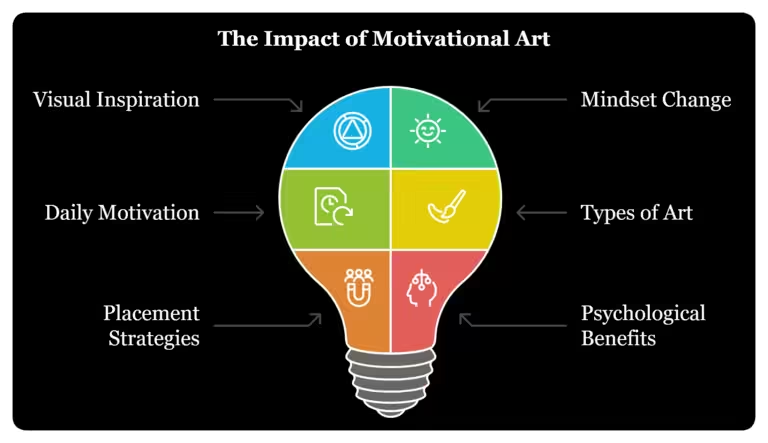Visualizing Success: The Power of Art in Goal Setting
Visualizing success can transform dreams into reality. Art plays a crucial role in this process.
Imagine setting goals with vibrant visuals instead of plain words. Art bridges the gap between imagination and achievement. It turns abstract ideas into clear, motivating images. Visual art engages the mind and emotions, making goals more compelling. This connection enhances focus and determination.
When goals are visually represented, the path to success becomes clearer. This blog explores how art can help you set and achieve your goals. It delves into the psychological impact of visualizing success. Discover how incorporating art into your goal-setting routine can make a difference. Whether you’re an artist or a novice, using art for goals can be a powerful tool. Let’s dive into the fascinating world of visual goal setting.
Introduction To Art And Goal Setting
Art is a powerful tool in many areas of life. It can inspire, motivate, and lead to personal growth. When it comes to goal setting, art offers a unique approach. It helps visualize success and make goals more tangible. This connection between art and goal setting can transform abstract ideas into clear, achievable targets.
The Connection Between Art And Goals
Art allows you to see your goals. Creating visual representations of your goals can make them more real. This practice helps you stay focused and motivated. For example, drawing or painting your goals can make them feel more attainable. Art bridges the gap between dreams and reality.
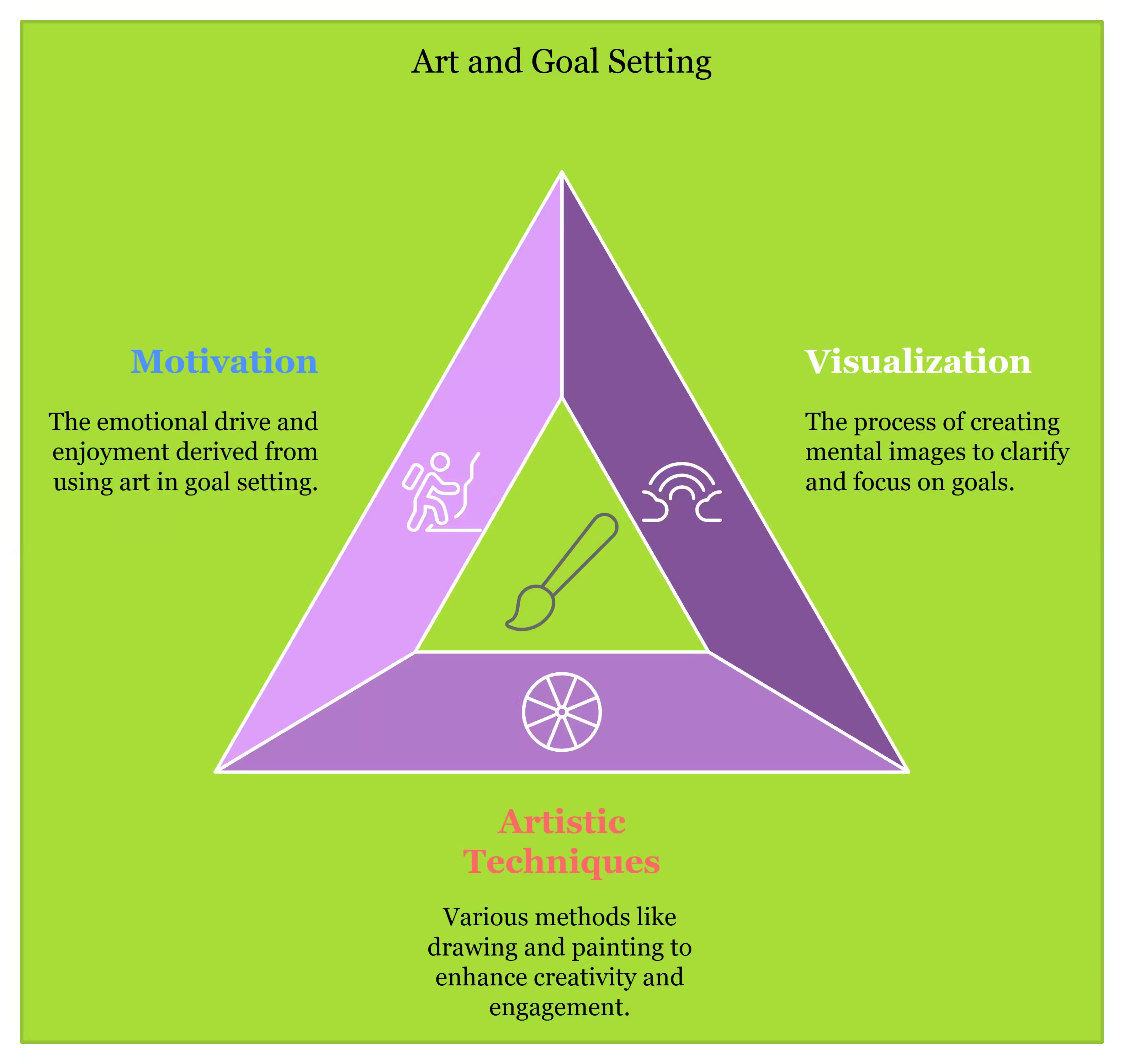
Why Visualization Matters
Visualization is a key part of achieving goals. When you visualize success, you create a mental image of what you want to achieve. This process helps your brain to focus on the desired outcome. Visualization can increase your confidence and belief in your abilities. It helps to keep you motivated and on track.
Using art to visualize goals adds an extra layer of engagement. It makes the process enjoyable and creative. This approach can enhance your commitment to your goals.
| Art Technique | Benefit |
|---|---|
| Drawing | Clarifies your vision |
| Painting | Boosts creativity |
| Collage | Combines multiple ideas |
- Art makes goals tangible.
- Visualization increases focus.
- Creative methods boost motivation.
Incorporate art into your goal setting. See the difference it makes.
The Psychology Behind Visualization
Visualization is a powerful tool in goal setting. It involves creating a mental image of achieving your goals. This technique can help you stay focused and motivated. But why does visualization work? Let’s explore the psychology behind it.
Mental Imagery And Success
Mental imagery is the process of creating pictures in your mind. Athletes often use this technique to enhance performance. They imagine themselves winning a race or scoring a goal.
Studies show that mental imagery activates the brain’s motor cortex. This part of the brain controls movement. So, imagining an action can improve your ability to perform it.
Visualization can boost confidence. Seeing yourself succeed makes the goal feel more achievable. It reduces anxiety and increases motivation.
How The Brain Processes Visual Goals
The brain processes visual information more effectively than verbal information. When you visualize a goal, you engage the occipital lobe. This part of the brain processes visual data.
Visual goals create a vivid image in your mind. This image acts as a blueprint for success. Your brain begins to look for ways to make the image a reality.
Visualization also activates the reticular activating system (RAS). The RAS filters information and focuses on what’s important. When you visualize a goal, the RAS highlights opportunities to achieve it.
Using visualization in goal setting can have a profound impact. It aligns your brain with your objectives. This alignment makes it easier to achieve your goals.
Types Of Artistic Visualization Techniques
Visualizing success through art can be a powerful tool for goal setting. Artistic visualization techniques help people imagine their goals and inspire them. Below, we explore two popular artistic visualization techniques: Vision Boards and Mind Mapping.
Vision Boards
Vision boards are a creative way to represent your goals visually. You can use magazines, photos, and drawings to create a collage of your dreams. This technique helps you focus on what you want to achieve.
To create a vision board, follow these simple steps:
- Gather materials like magazines, scissors, glue, and a poster board.
- Cut out images and words that resonate with your goals.
- Arrange and glue the images on the poster board.
- Place your vision board somewhere you can see it daily.
Seeing your goals every day keeps you motivated. It reminds you of what you are working towards. Vision boards can be fun and inspiring.
Mind Mapping
Mind mapping is another effective artistic visualization technique. It helps you organize thoughts and ideas related to your goals. Mind maps use diagrams to connect different aspects of a goal.
Creating a mind map involves these steps:
- Start with a central idea or goal in the center of the page.
- Draw branches from the central idea representing key aspects.
- Add sub-branches for smaller tasks or ideas related to each aspect.
- Use colors and images to make the map more engaging.
Mind maps make complex goals easier to understand. They provide a visual summary of all the steps needed. This clarity helps in planning and executing your goals efficiently.
Both vision boards and mind mapping are powerful techniques. They use art to turn abstract dreams into concrete plans. These methods can help you stay focused and achieve your goals.
Creating Your Vision Board
Creating a vision board can be a powerful tool for goal setting. A vision board is a collection of images and words that represent your dreams and goals. By visualizing your aspirations, you can stay motivated and focused on achieving them.

Materials Needed
- A large piece of poster board or corkboard
- Magazines, newspapers, or printed images
- Scissors
- Glue, tape, or pins
- Markers or pens
- Stickers and decorative elements (optional)
Step-by-step Guide
- Set Your Intentions: Think about what you want to achieve. Write down your goals on a piece of paper.
- Gather Materials: Collect all the materials listed above. Make sure you have everything you need.
- Find Images and Words: Look through magazines, newspapers, or online sources. Cut out images and words that resonate with your goals.
- Arrange Your Board: Place your cut-outs on the board. Move them around until you are happy with the layout.
- Secure Your Images: Glue, tape, or pin the images and words to the board. Make sure they are firmly attached.
- Add Personal Touches: Use markers, pens, or stickers to add notes, draw, or decorate. Make it uniquely yours.
- Display Your Board: Place your vision board where you will see it daily. This will keep you inspired and on track.
Creating a vision board is an engaging activity. It helps you focus on your goals and visualize success. Follow these steps and enjoy the process.
Using Art To Track Progress
Using art to track progress can be a powerful tool in goal setting. It helps visualize achievements and motivates continued effort. Visual representations make it easier to see growth. This section explores how to use art to track progress effectively.
Visual Journals
Visual journals are a creative way to document progress. They combine art and text in a single format. Use drawings, paintings, or collages to represent milestones. Each page can reflect a different stage of your journey. This keeps the process engaging and personal.
Here are some tips for creating a visual journal:
- Choose a dedicated notebook or sketchbook.
- Set aside regular time for journaling.
- Include both images and short notes.
- Use colors that resonate with your feelings.
Progress Charts
Progress charts offer a structured approach to tracking goals. They provide a clear visual representation of achievements over time. Use graphs, bar charts, or pie charts to display data. This method is particularly effective for measurable goals.
To create a progress chart:
- Identify key metrics to track.
- Decide on a chart format that fits your data.
- Update the chart regularly.
- Use different colors to indicate various stages.
| Metric | Target | Achieved |
|---|---|---|
| Weight Loss | 10 lbs | 6 lbs |
| Books Read | 12 | 8 |
Using art to track progress makes goal setting more enjoyable. It adds a personal touch and can be a constant source of motivation. Whether through visual journals or progress charts, art can transform how we track our achievements.
Real-life Success Stories
Visualizing success can transform dreams into reality. Real-life success stories show how art in goal setting has made a difference. These stories inspire and show the power of visualization.
Case Studies
Many people have achieved goals through visualization and art. Let’s explore some real-life cases.
| Name | Goal | Outcome |
|---|---|---|
| Jane Doe | Run a marathon | Completed within 6 months |
| John Smith | Start a business | Launched a successful startup |
Jane Doe used visual art to map her marathon journey. She created a vision board with images of her running. Each day, she visualized crossing the finish line. This motivated her to train harder.
John Smith wanted to start a business. He drew a roadmap of his business plan. Each milestone he achieved was colored in. This kept him focused and driven.
Personal Testimonials
People from different walks of life have shared their experiences with art in goal setting. Their stories highlight the impact of visualization.
- Anna Lee: “Creating a dream collage helped me stay positive and focused. I achieved my dream job within a year.”
- Michael Brown: “Drawing my goals made them feel real. I lost 20 pounds in six months.”
- Sara White: “Sketching my future home kept me motivated. I saved enough money for a down payment in two years.”
These personal testimonials show the power of visualizing success. Art in goal setting is not just about dreams. It’s about turning those dreams into reality.
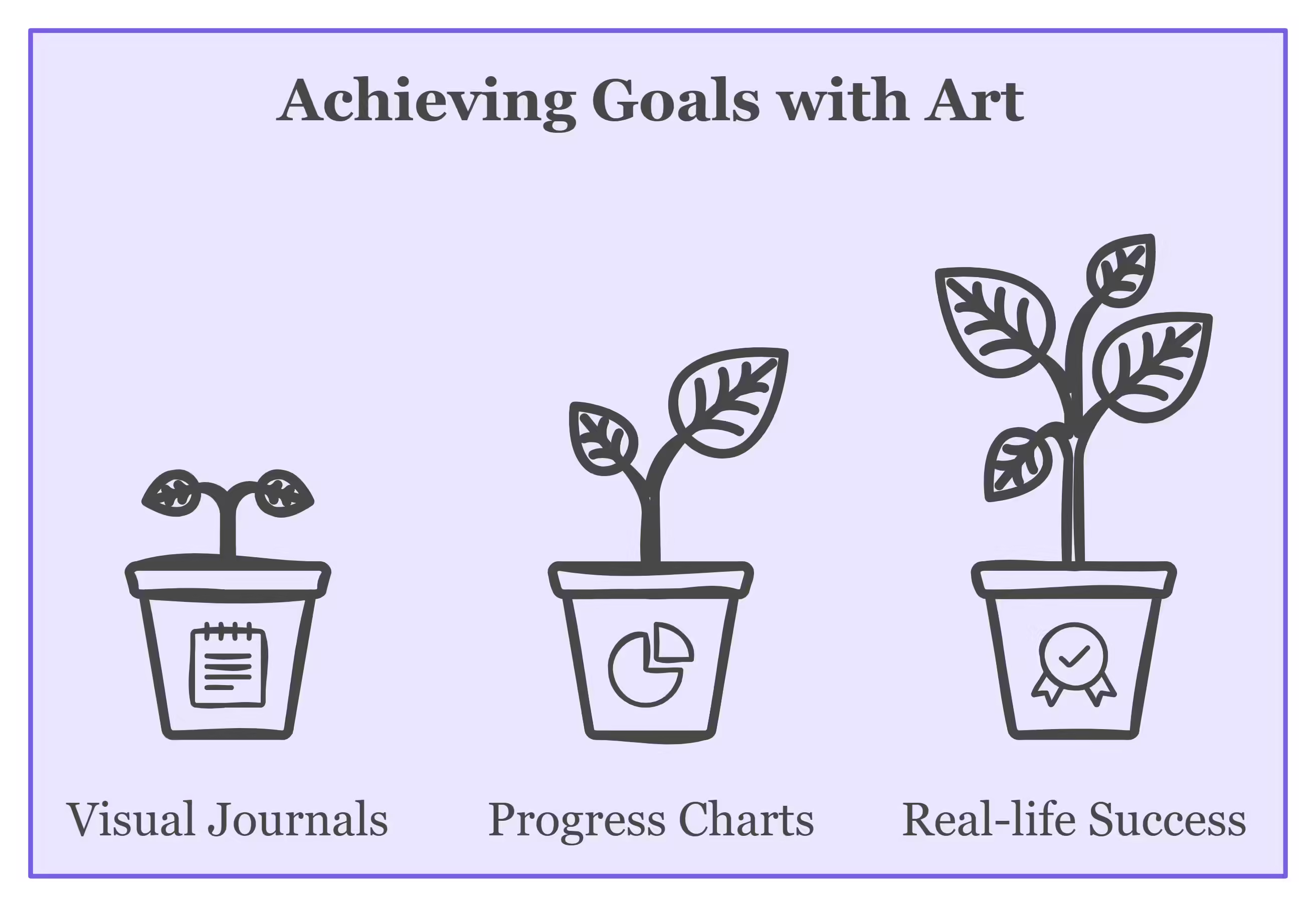
Incorporating Art Into Daily Routine
Art can be a powerful tool in achieving goals. By making art a part of your daily routine, you can visualize success clearly. This practice helps in focusing your mind and channeling your creativity towards your goals.
Daily Drawing Practices
Start each day with a simple drawing. This can be anything related to your goals. The act of drawing makes your goals tangible. Here are some steps:
- Set aside 10 minutes each morning.
- Draw something that represents your goal.
- Keep your drawings in a dedicated notebook.
Over time, these drawings will serve as a visual diary of your journey. They will remind you of your progress and keep you motivated.
Art-based Reflection
At the end of each day, reflect on your progress through art. This can be a drawing, painting, or even a collage. Here are some tips:
- Use colors to express your feelings.
- Draw symbols that represent your achievements and challenges.
- Write short notes next to your artwork.
This practice helps you understand your emotions and thoughts better. It also provides a creative outlet for stress and helps in planning the next steps.
| Time of Day | Art Activity |
|---|---|
| Morning | Daily Drawing |
| Evening | Art-Based Reflection |
Incorporating these art activities into your daily routine can significantly enhance your goal-setting process. It makes the journey more enjoyable and keeps you engaged and motivated.
Challenges And Solutions
Visualizing success through art can transform goal setting. Yet, many face challenges. Overcoming these obstacles is key to achieving your dreams. This section explores common issues and offers practical solutions.
Overcoming Creative Blocks
Creative blocks are common. They can slow down your progress.
- Identify the cause: Understand what triggers your block.
- Change your environment: A new setting can spark creativity.
- Take breaks: Short breaks can refresh your mind.
- Seek inspiration: Look at other artists’ work for ideas.
Remember, creativity flows better with a clear mind. Regular practice helps. Don’t wait for the perfect moment to create. Start with small steps.
Staying Consistent
Consistency is crucial in visualizing success. It ensures steady progress.
| Challenge | Solution |
|---|---|
| Procrastination | Set a schedule. Stick to it. |
| Lack of Motivation | Join a group. Share your goals. |
| Distractions | Create a dedicated workspace. |
Keep a journal of your progress. Note down small victories. This boosts motivation. Stay committed to your vision.
Conclusion And Next Steps
As we conclude our exploration of visualizing success through art in goal setting, it’s essential to revisit the main points we’ve discussed. This will help solidify your understanding and prepare you for future goal-setting endeavors.

Recap Of Key Points
Throughout this article, we have highlighted the importance of using art to visualize success. Here are the key points:
- Visual aids can clarify and reinforce your goals.
- Artistic expression helps in maintaining motivation and focus.
- Creative visualization activates different parts of the brain, leading to better retention and understanding.
These methods are not just about creating beautiful images. They are powerful tools to help you stay on track and achieve your goals.
Encouragement For Future Goals
Now that you understand the power of art in goal setting, it’s time to apply these insights to your future aspirations. Here are some next steps:
- Start a visual journal to keep track of your goals and progress.
- Use vision boards to create a tangible representation of your dreams.
- Experiment with different art forms to find what resonates with you.
Remember, the journey towards your goals should be enjoyable and fulfilling. Keep experimenting and find what works best for you. Your creativity will be a strong ally in achieving success.
Frequently Asked Questions
What Is The Role Of Art In Goal Setting?
Art helps visualize goals clearly. Visual representation makes objectives tangible and easier to achieve.
How Can Visualizing Success Improve Motivation?
Seeing goals through art boosts motivation. It creates a vivid image of success, enhancing commitment.
Why Use Art For Setting Personal Goals?
Art makes goals relatable. It transforms abstract ideas into visual forms, making them more engaging and attainable.
Can Artistic Visualization Aid In Professional Growth?
Yes, it can. Artistic visualization clarifies career goals, helping in strategic planning and professional development.
Conclusion
Art plays a vital role in goal setting. Visualizing success through art sparks creativity. It makes goals tangible and achievable. Create visual representations of your dreams. Keep them in sight daily. This method enhances focus and motivation. Remember, small steps lead to big achievements.
Use art to keep your goals clear. Stay inspired and committed. Your journey to success becomes more enjoyable. Embrace the power of art. Let it guide your path to success.


